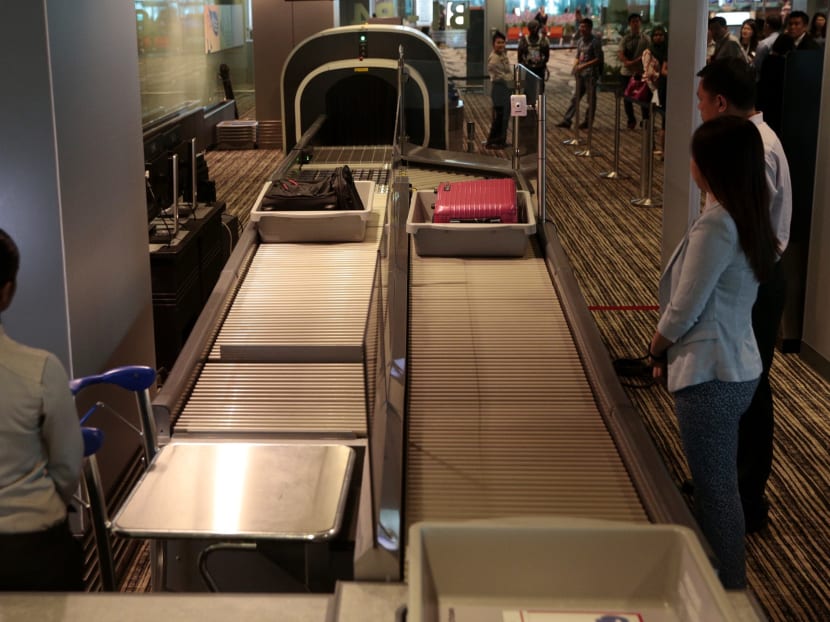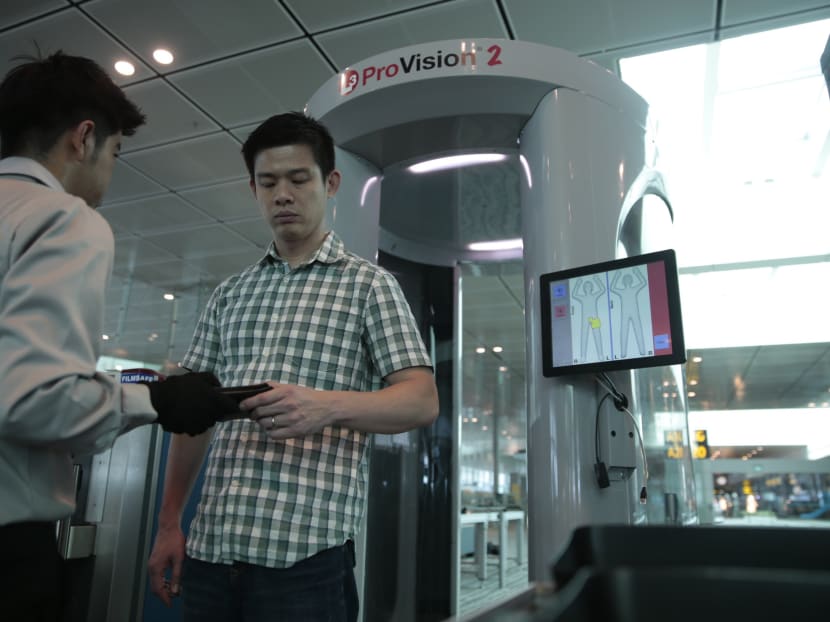Changi Airport trials new luggage, body scanners
SINGAPORE — Security checks at Changi Airport could soon be faster and more convenient for passengers, if ongoing trials with new luggage and body scanners prove successful.


SINGAPORE — Security checks at Changi Airport could soon be faster and more convenient for passengers, if ongoing trials with new luggage and body scanners prove successful.
The new screening technologies being tested could allow passengers to pass through security checks without having to take out laptops and electronic devices from their hand luggage.
Separate trials for the two screening systems are now under way at two boarding gates at the airport’s Terminal 3.
The first trial involves a new hand-luggage screening system that combines a computed tomography (CT) scanner with an automatic tray-return system.
Two passengers can simultaneously place their hand luggage on the trays.
The trays are then automatically moved to the CT scanner, which generates three-dimensional (3D) images — compared with the traditional two-dimensional ones by X-ray scanners — for screening purposes.
The system is able to process an estimated 20 per cent more passengers in the same time.
Mr Alan Tan, Changi Airport Group’s vice-president of aviation security, said: “With CT, because it provides a 360-degree view, or 3D image for security screening, we are now able to allow passengers to keep their electronic items in the bag, thereby reducing the need to unpack, repack, and allow them to pass through security screening a lot faster.”
The new hand-luggage trays will also be bigger, allowing travellers to avoid having to use multiple trays for their belongings.
Changi Airport is the first airport in Asia to conduct trials for this new hand-luggage screening system. Further trials involving passengers are expected to begin in May.
A separate trial is also now under way at another Terminal 3 boarding gate, to test a new-generation body scanner that is said to better protect passengers’ privacy.
Full-body pat-downs may become less frequent with the new scanner, which can better locate objects on the travellers’ clothing or body.
Mr Tan said the issue of privacy is “a big consideration for a passenger”.
“With the new algorithm, it automatically detects items that our officer needs to pick up, and then very quickly resolves the targeted areas. So we don’t need to conduct a full pat-down as we have done in the past,” he added.
This new scanner will generate a stick-man image of the traveller being inspected, rather than an anatomically accurate picture.
New software will allow the scanner to better detect metallic and non-metallic items on a passenger, and highlight the locations of these objects to the security officer.
Trials of both systems will run until June this year, after which a review will be done to examine their feasibility, before it can be determined if they will be implemented at the airport.









